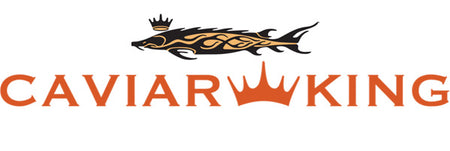Caviar is the unfertilized roe of the female sturgeon which is processed by lightly salting. Caviar is a delicacy which can be eaten straight or used as a garnish.
The roe are harvested and then passed through a sieve, the liquid is pressed off and the eggs are lightly salted (“malossol”) before being packed in tins or jars.
Caviar is considered an appetizer that is to be enjoyed in small amounts. It is tasty and healthy. Made only of fish roe and a little salt, it is a good source of calcium and phosphorus, as well as protein, selenium, iron, magnesium, and Vitamins B12, B6, B2, B4, C, A, and D. It also contains the amino acids arginine and histidine, as well as the essential amino acids lysine, isoleucine, and methionine.
Nutritional information of sturgeon caviar (per 100g)
Calories: 270
Protein: 25.3 g
Fat: 17 g
Cholesterol: 440 mg (75% of the cholesterol in Sturgeon caviar is HDL, known as the good cholesterol. High levels of HDL have been shown to protect against heart attacks.)
Sodium: 1,700 mg
Phosphorus: 330 mg
Potassium: 164 mg
Calcium: 51 mg
Sugar: 4 g


